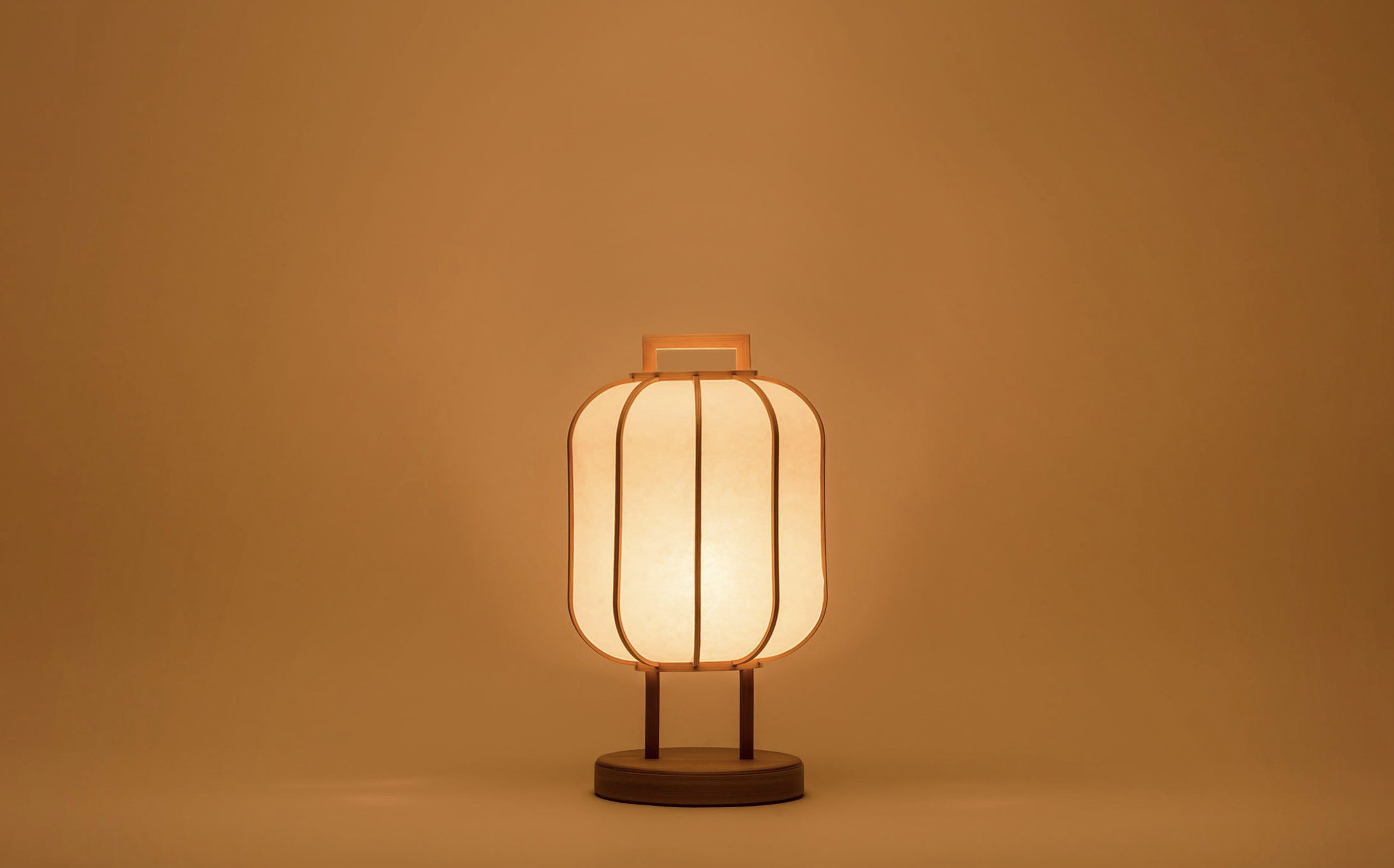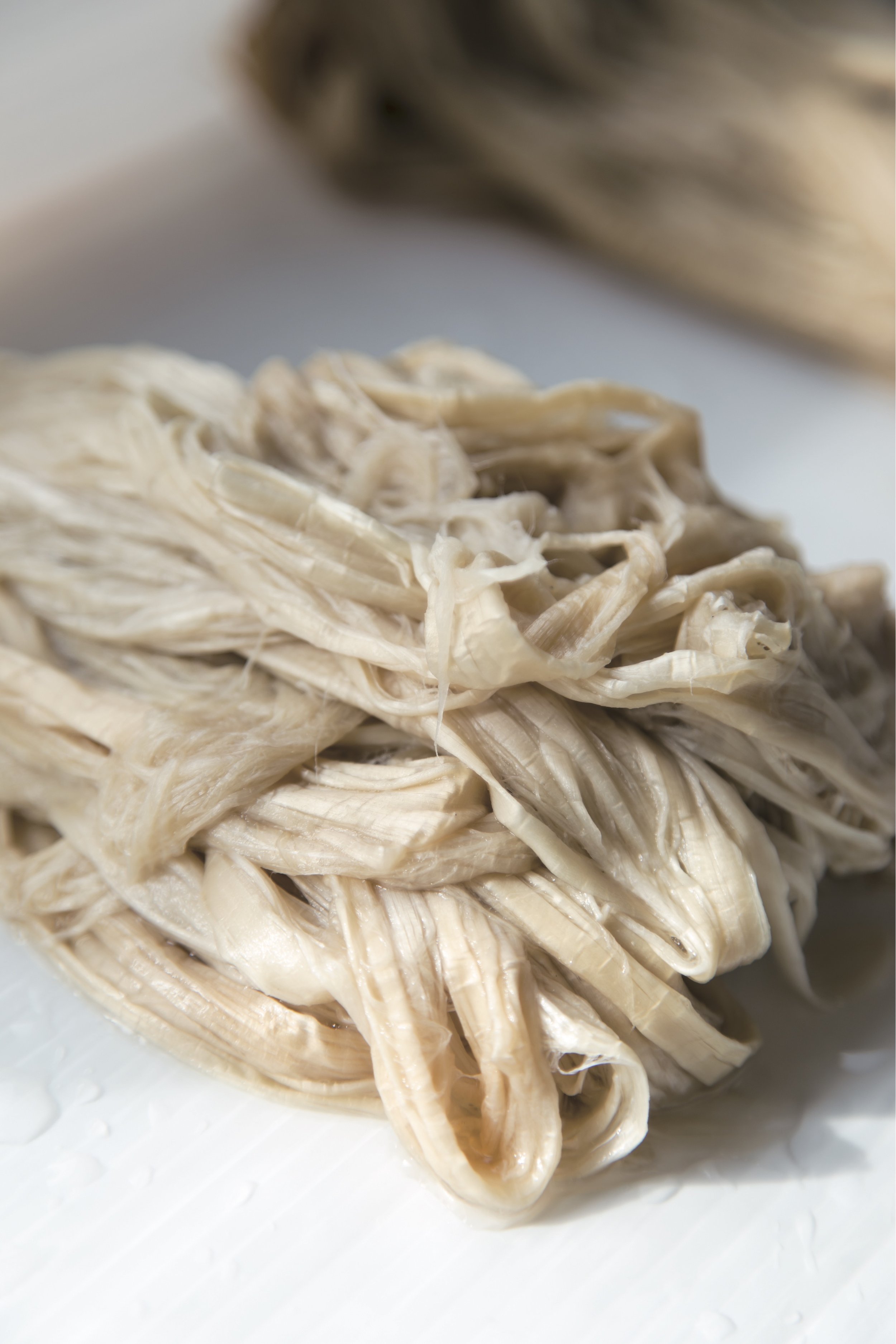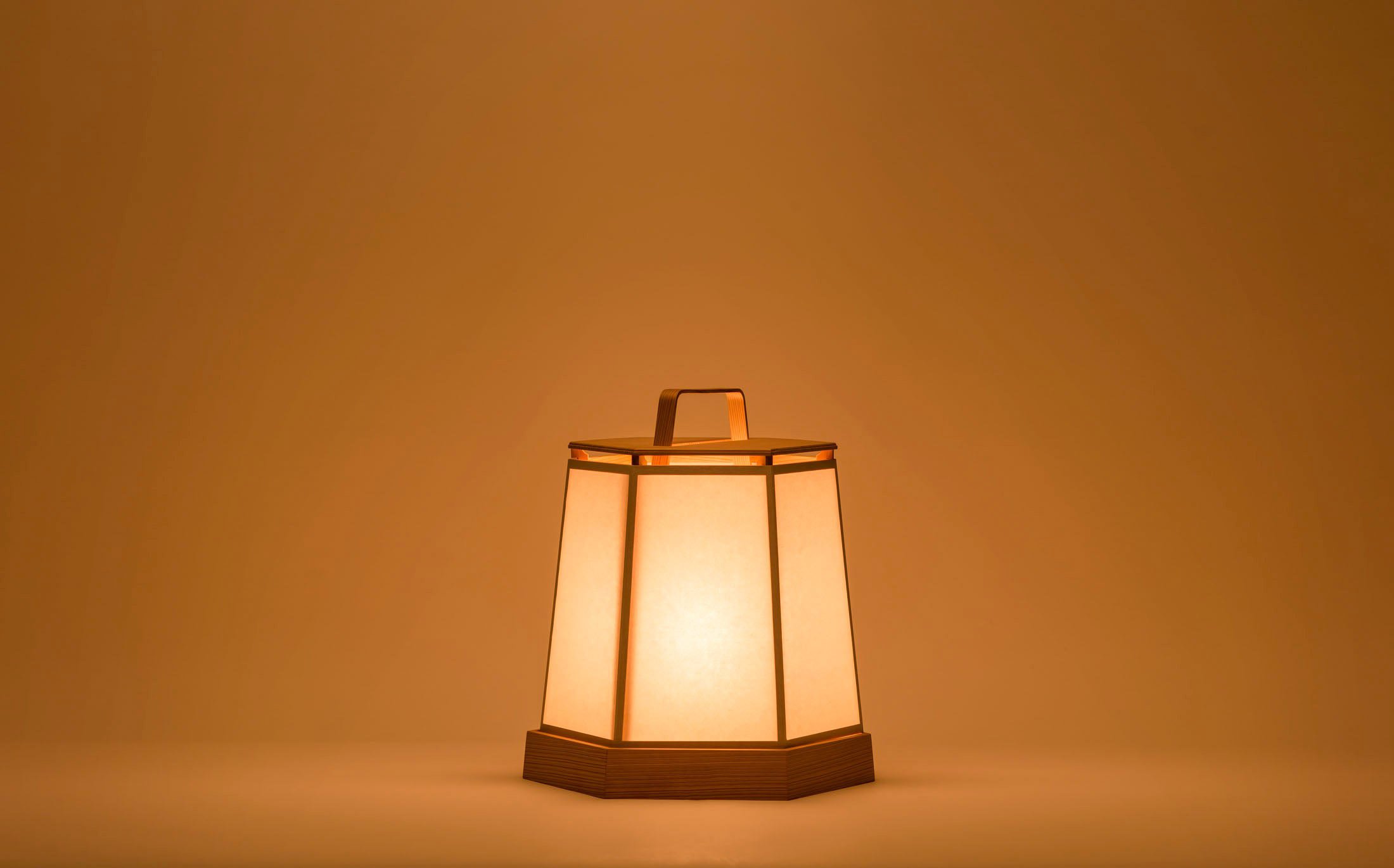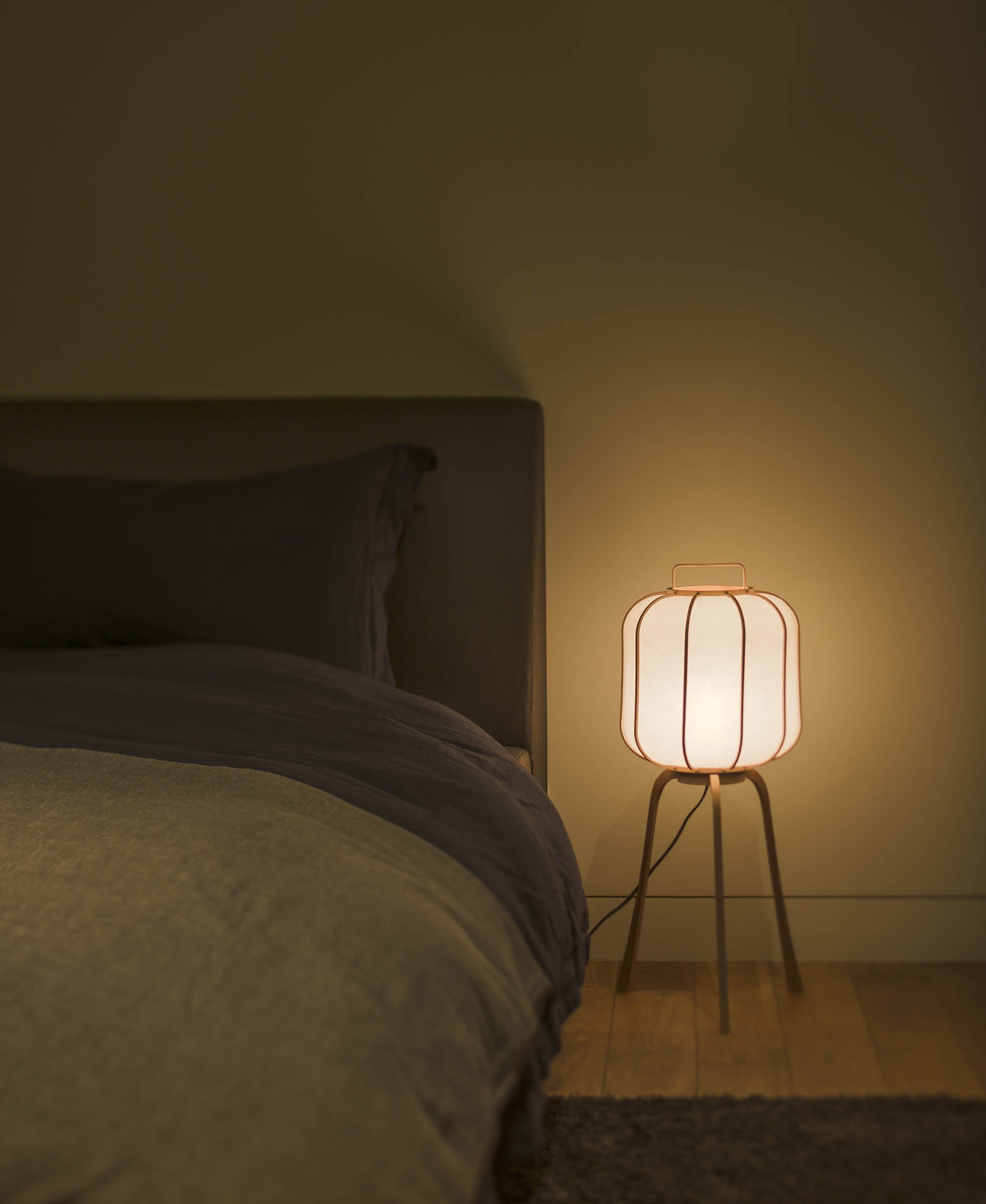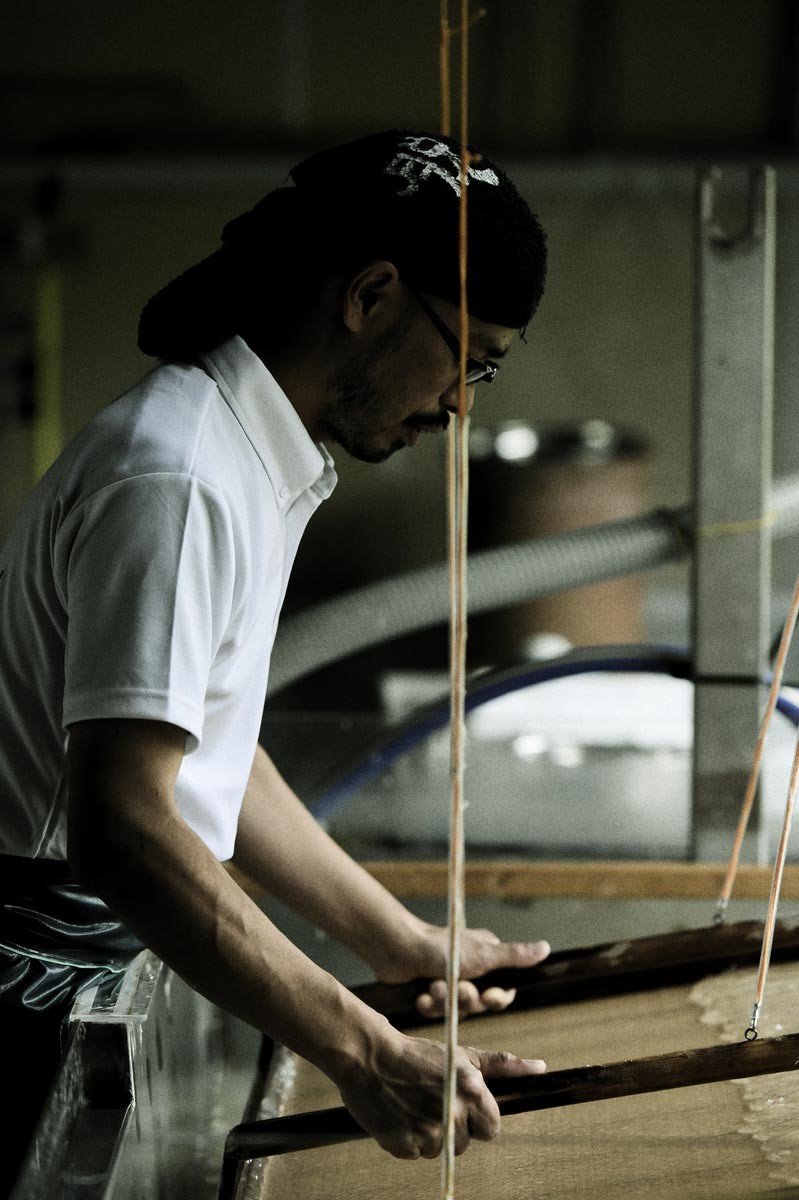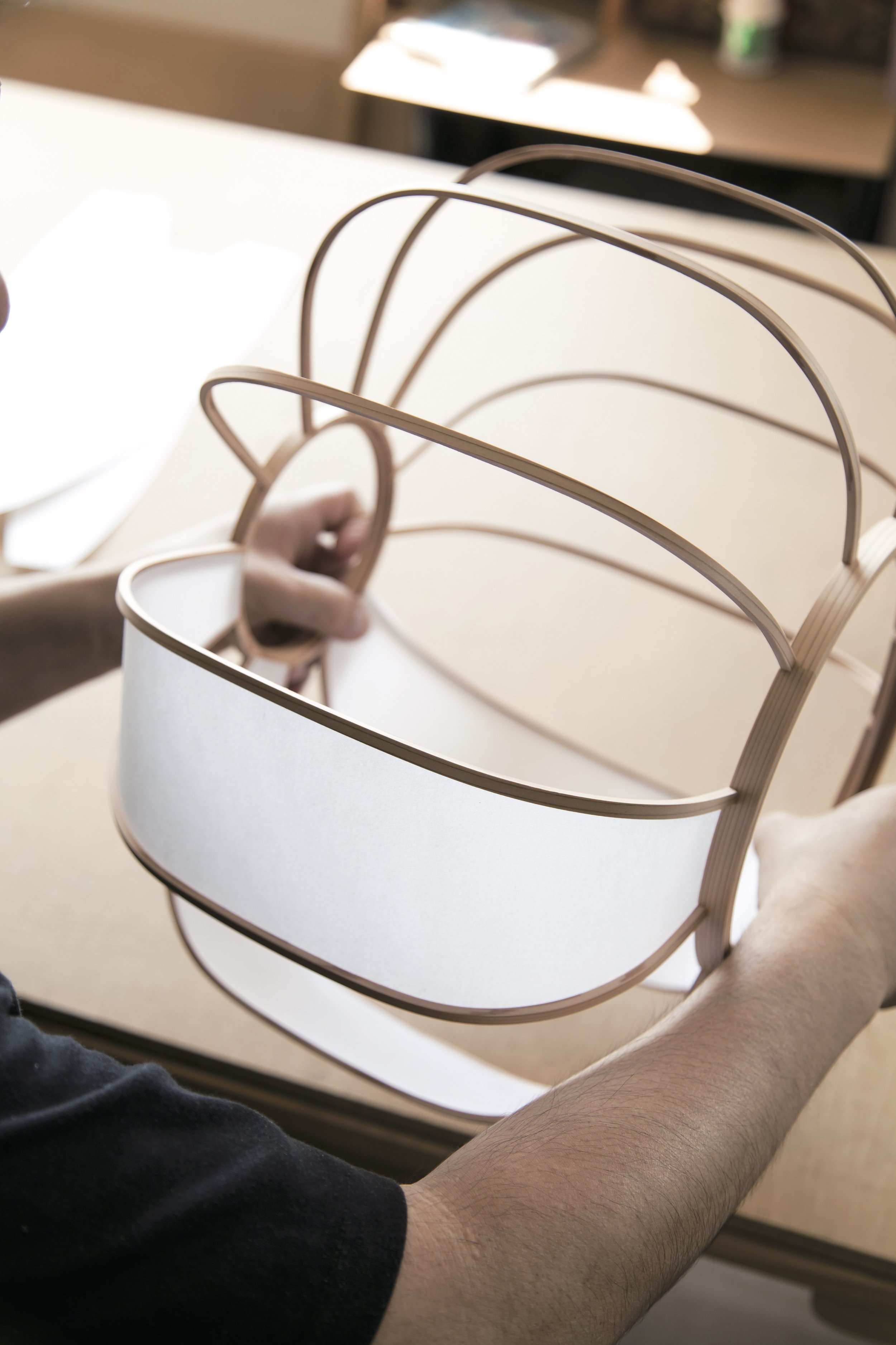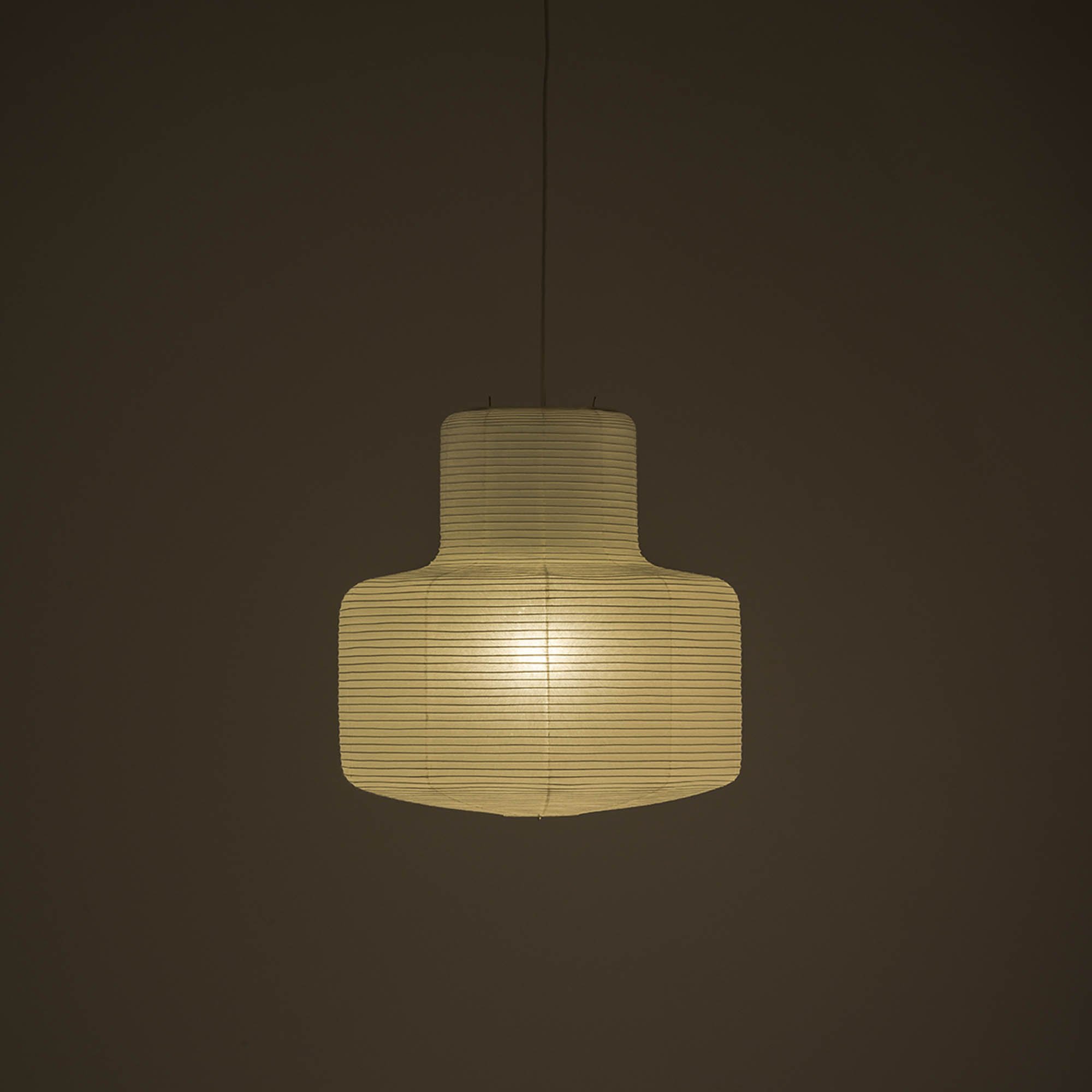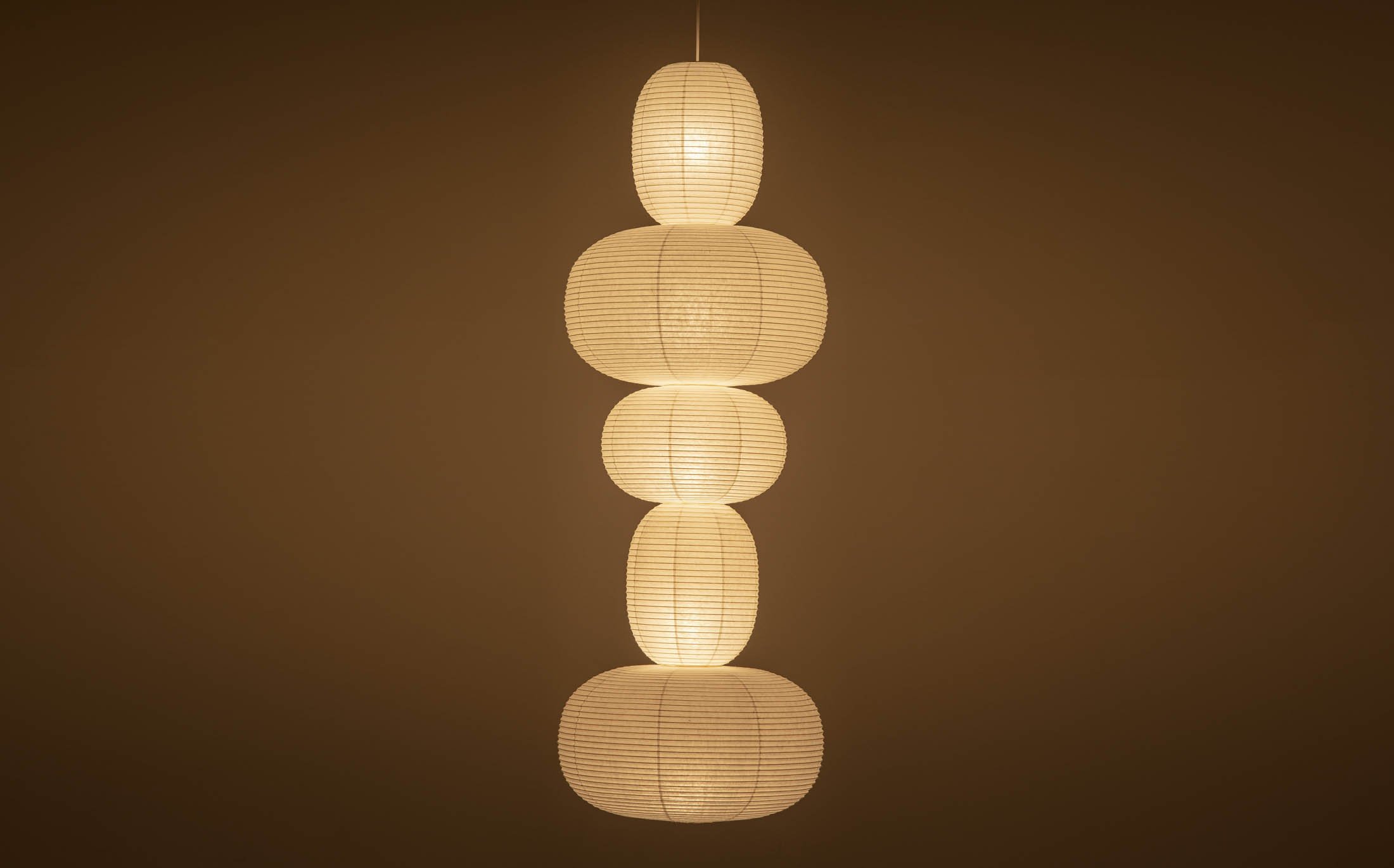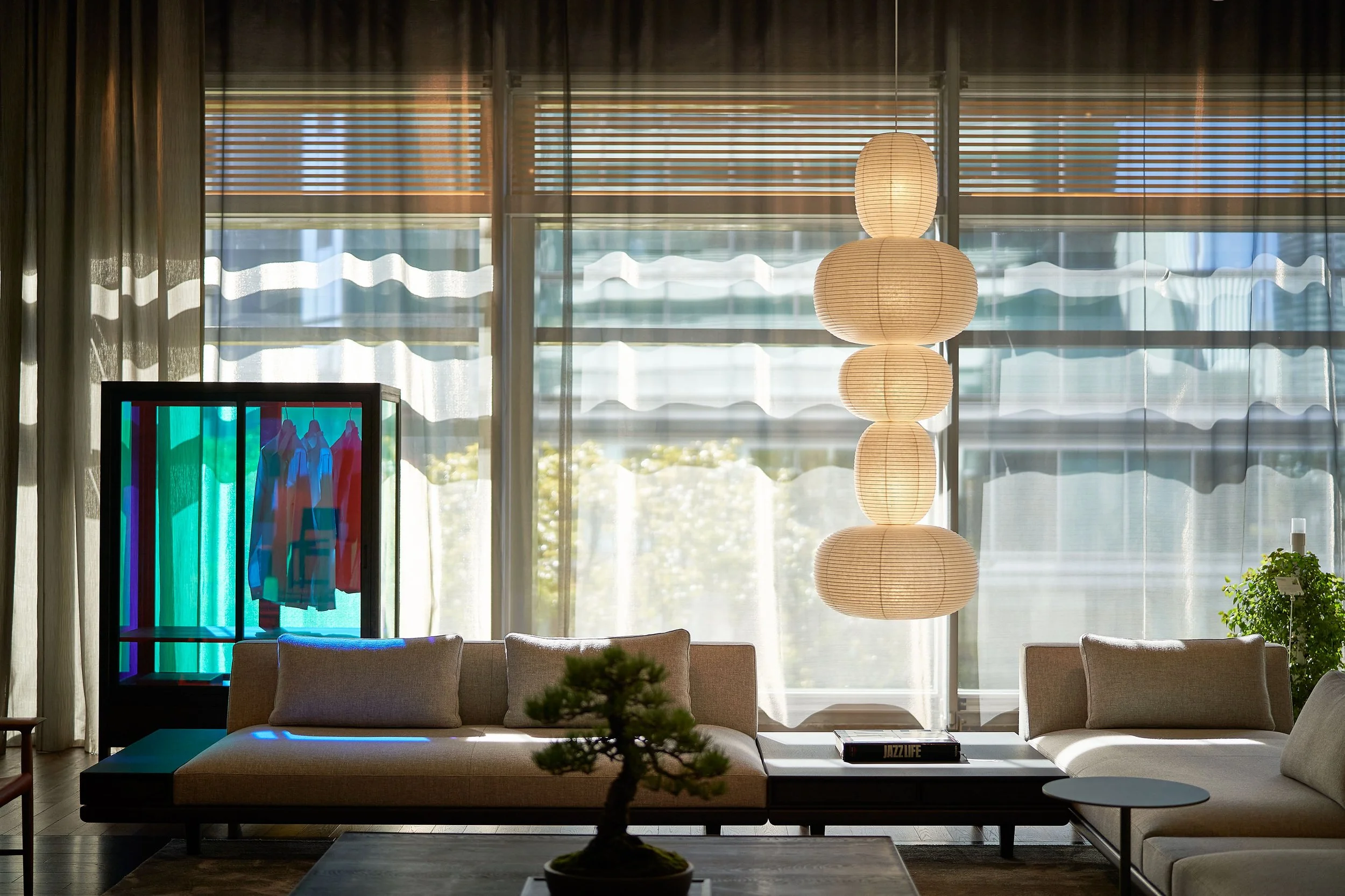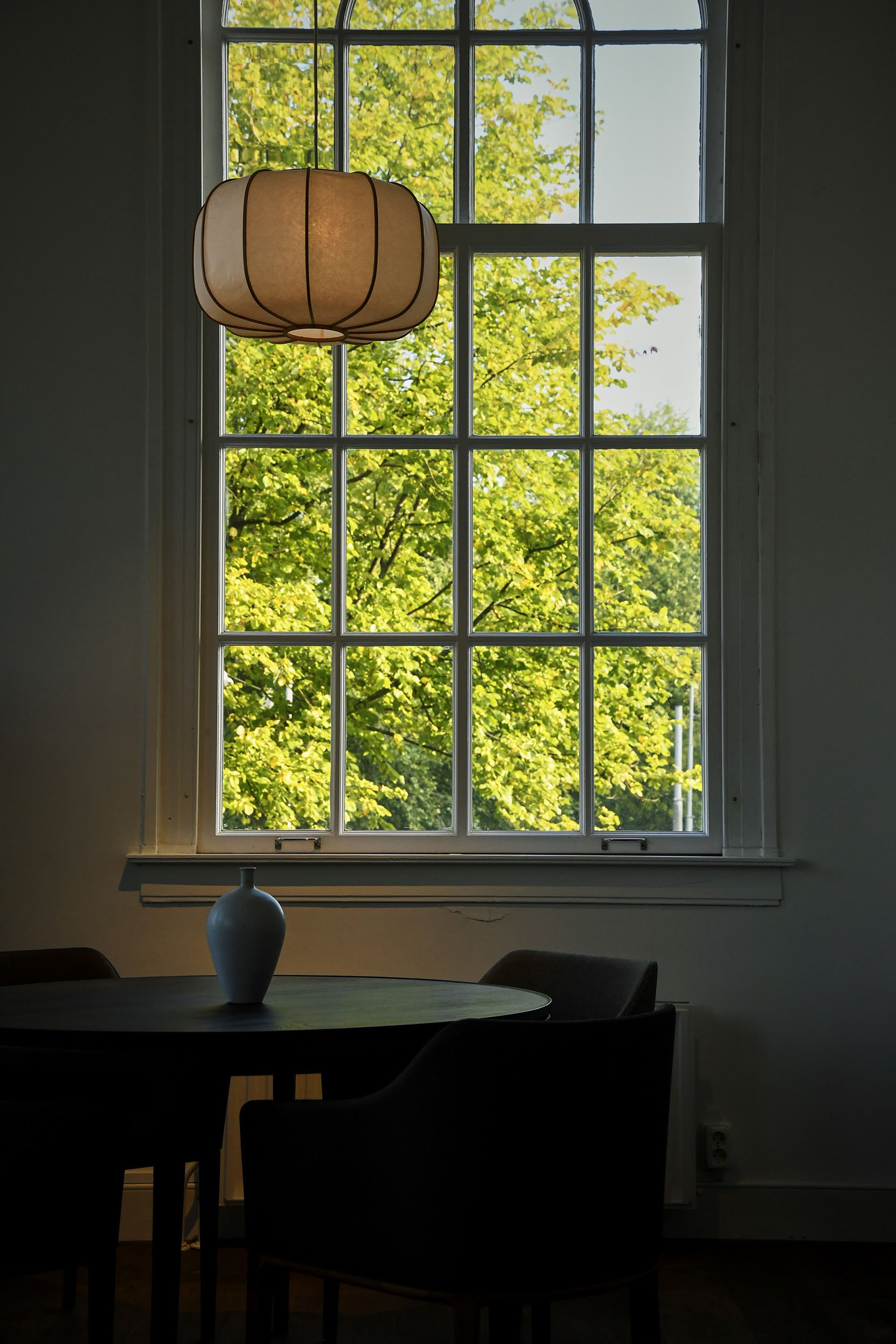
Nothing perhaps embodies the essence of Time & Style quite like their Contemporary Japanese Light collection. A graceful selection of andon and chochin creates a gentle atmosphere in a space.
Time and Style is a Japanese interior brand.
The brand specialises in designing and producing furniture, lighting, tableware, towels, and other everyday tools. The design concept involves updating traditional Japanese techniques for modern living and creating products that are durable, timeless, and highlight the unique qualities of the materials used.
Celebrating local Japanese heritage, or “regional roots,” Time & Style fuses sleek modernity with Japanese craftsmanship — a legacy handed down through generations. Offering robust yet visually striking handcrafted products, this pioneering brand embodies a unique blend of beauty, functionality and history, borne from the raw materials of Japan.
Nothing perhaps embodies the essence of Time & Style quite like their Contemporary Japanese Light collection. A gorgeous series of andon and chochin, they are a graceful fusion of craftsmanship and tradition. Thanks to the use of washi paper, allowing the lanterns to cast a beautifully soft and inviting light, and the strength of the advanced wood craftsmanship which goes into their design, the lanterns — true to Time & Style form — are soft to the eye yet robust, and of course, seeped in a rich history.
-
andon
Simple musubi-todai lanterns with three sticks tied together to form a stand have been used to illuminate the darkness of the night since the Kofun and Asuka periods (around 300 to 700CE). It is said that for a long time until the Edo period (1603-1868), lamps with exposed wicks were used.
However, if you look at the nighttime scenes depicted in ukiyo-e woodblock prints from the Edo period, you can see how people's daily activities were colored by the indescribably bewitching and emotional light of the lanterns used at that time. Our concept of recreating beautiful light in the modern age was born from asking whether modern lighting fixtures that seek convenience really bring value as a way of delivering light.
“Andon became a part of Japanese lifestyle in the Edo period, serving as indispensable sources of light in everyday life. We sought to restore this light rooted in Japanese life-styles, with the soft illumination of candles filtering through washi paper, to modern spaces.”
Roji andon AN-011
Roji andon AN-012
Roji andon
The name “andon” (“an” meaning “move” and “don” meaning lantern) comes from the fact that it is a lighted device that can be held in the hand and moved from place to place. When taking guests along the small alleys outside a house, a small andon with a handle was very useful to illuminate one’s step beyond the entrance. Roji andon lamps were used in the open spaces of tea rooms and in the long, narrow street gardens of townhouses called “dori-niwa.”
The “Rikyu roji andon” is the basic form of andon that they used as the starting point of our project to recreate this type of andon. The trapezoidal base is made of fastened cedar wood, and the back side is also made of solid cedar.
Japanese people have always valued a way of living where nature and human beings coexist and where the outside and inside are connected. Washi paper partitions are an important element of Japanese living spaces, and were created based on this culture. Andon (Japanese paper lanterns) provide the charm of soft light given by washi paper, as well as the beauty of a minimalist form and the strength of advanced wood craftsmanship. Time & Style believes that by bringing traditional andon into modern living spaces, it is possible to recreate the unique atmosphere of a Japanese space.
Time & Style designed bombori lighting with cedar frame and hand-made Mino washi paper. The difference from conventional bombori lighting is the thinness of the cedar wood frame. The width of the frame is generally 7 to 8 mm, but they narrowed it down to 5 mm. Since it becomes difficult to maintain the shape by making the frame thinner, they explored the extremes of the balance of the width and depth of the cedar wood.
Botan no Hana BOT-02
The Kiku no Hana floor stand is born from a new idea during the development of the pendant lighting of Botan no Hana. To match the bombori shade, the cylindrical supports are also arranged in the same design using cedar wood and Mino washi paper, so that the whole becomes a single mass of light and emits a soft light. It is a design that has never existed in traditional Japanese lighting fixtures.
Kiku no Hana
Two-legged andon AN-022
Two-legged andon AN-025
Washi Paper
Two-legged andon
The two-legged andon has two thin legs that extend from the base and lift the hibukuro(japanese name of lighting shade that is made of ceder and washi paper) upward. While the roji andon is designed to be used in the garden of a tea house or in a street garden, the two-legged andon is for use in a living room. The high position of the hibukuro is designed so that the light source is close to your face when you are sitting on a tatami mat.
Within the collection, the “vertical masu two-legged andon” and the “vertical masu cross two-legged andon” are the strongest references to the designs made in that era. An andon with a spherical hibukuro called a bonbori has also existed since the Edo period.
Shoken andon AN-026
Shoken andon
The shoken andon is a form of andon that has never existed in the history of Japanese lanterns, including during the Edo period. Despite this, it has been designed as a fusion of the basic structure of a traditional andon with the lighting needs of modern life, and does not look out of place even when compared to other andons.
Time & Style designed the shoken andon to be placed on a desk by the window in a study, with gentle light filtering through the washi paper, and a soft silence enveloping the time spent reading at night.
Three-legged andon AN-031
Three-legged andon
For lighting in modern homes, it is necessary to set the light source at a certain height. The legs are based on the style of Bon lanterns, combining the three legs of a Bon lantern with the round hibukuro of a traditional bonbori andon.
Washi paper
Kozo (paper mulberry), with its long and tough fibers, has been used as a raw material for washi paper since ancient times. In recent years, the production of domestically produced kozo has declined and most kozo is now imported, but TIME & STYLE's Japanese lighting uses handmade washi made from precious domestically-produced Nasu kozo, which is cultivated by washi paper artisans themselves.
The kozo is first soaked in running water for about a day to soften it and remove the scum. At this time, impurities attached to the kozo are removed. It is important to rinse these impurities off carefully because they will affect the finish of the paper. When the kozo is boiled in an alkaline solution, the scum that connects the fibers dissolves and the fibers can be easily loosened by hand. An addiional process called “chiri-tori” is then done by hand to remove any remaining dust and impurities. This removing process is the most time-consuming, and over five days of cleaning is required to produce enough paper for one day's papermaking. The more painstakingly the chiri-tori is done, the more beautiful the paper becomes. After about two weeks of processing, the raw materials are mixed with a mucus extracted from aibika, and the paper is finally made using a bamboo screen made of woven bamboo strands and a beam made of a wooden frame and metal fittings. The basic way of making washi paper is called “Nagashi-suki.” By taking the time to make each sheet of paper by alternately shaking it horizontally and vertically many times, a strong and beautiful paper with high fiber density and no irregularities can be produced.
Starting from the preparation and refinement of raw materials, to mixing, papermaking, and sun-drying, the process takes much more time and effort than one might imagine. Inheriting the tradition of washi paper, which has been handed down for more than 1,300 years, Japanese washi paper is made with sincerity in search of the true essence of this traditional craft.
Sashimono
Sashimono are woodwork products made by making joinery cuts called hozo in boards and slats and fitting them together. Since no nails are used, these products can adapt to seasonal changes and the gradual movement of the wood, and are relatively easy to repair and maintain over time. After the hozo is cut by machine, the each piece is inserted into the matching piece by hand, using the touch of the fingertips to find any slight error of less than one millimeter, and then polished and adjusted by hand. The simpler and thinner the material, the less room for error, and the more precision is required.
Chochin
The area around Gifu City is blessed with high-quality bamboo and is in close proximity to Mino, which produces excellent washi paper, and chochin lanterns have been made there for over 300 years. The mold is assembled into a cylindrical shape, and the higo (thin strips) are wound in a spiral along the fine grooves carved at equal intervals in the mold. In order to achieve a balanced shape, even tension must be applied and the winding must be done quickly and accurately by hand. After winding the higo, glue is applied, and washi paper is pasted onto each section of thehigo.
Chochin are a unique Japanese lighting device; they are very lightweight, compact, can be folded up easy to move wherever you want to place.
Tourou TOU-03
Tourou TOU-04
Tourou TOU-P1
Tourou
At the entrance of the approach to the shrine, stone lanterns are placed on both sides of the path that leads to the main hall.. Many of the stone lanterns consist of a large firebox and a thin pillar at the top. Tourou is a Japanese paper lighting that evokes the shape of the traditional stone lantern. The horizontal lines drawn by countless higo and the light overflowing through the fine washi paper create a dignified and quiet atmosphere. But, the exterior, which rises vertically and has a volume in the upper part, gives an impression of movement that makes you feel a sense of dynamism at the same time as a strong and still appearance like a stone lantern. A sense of unity is created by minimizing the overlap of the pasted Japanese paper. The lighting gives the space a sense of transparency and softness by the thin and delicate line of strips and the seamless expression of the soft light through the Mino washi paper.
Taiyo PTM-31
Taiyo PTL-32
Taiyo PTM-13213
Taiyo
Japan was once known as “the land of the rising sun.” Taiyo is a lighting fixture that, through form, expresses the moment when the sun, a symbol of the Shinto worship of the Japanese, rises above the horizon and separates from the surface of the water.
Among the implements of illumination handed down in Japan from long ago are lanterns made from bamboo strips and Japanese washi paper. These can be carried with a lit candle or folded away compactly when not in use. We have created a lighting fixture made by craftsmen of the Suifu lanterns made for about 400 years in Mito, Ibaraki Prefecture, and using Sekishu washi from Shimane Prefecture, a tradition handed down for 1300 years.
Drop Paper Lamp
Drop Paper Lamp is made with the techniques of Suifu lantern making in Ibaraki Prefecture, an area known for the production of durable and sturdy paper lanterns. To form a delicately curved water droplet shape, the structure was created using countless strips. For the lantern’s shade, we chose Echizen washi paper which is generally used in large sheets that can be applied seamlessly to large fittings such as fusuma (sliding doors) and byobu (folding screens).
The Drop Paper Lamp will be released at 2023 Milan Design Week , running from Tue, Apr 18, 2023 - Sun, Apr 23, 2023.
Time and Style is a Japanese interior brand.
The brand specialises in designing and producing furniture, lighting, tableware, towels, and other everyday tools. The design concept involves updating traditional Japanese techniques for modern living and creating products that are durable, timeless, and highlight the unique qualities of the materials used.
Learn more about the brand:
Instagram: @timeandstyle.jp
Facebook: Time & Style
Website: timeandstyle.com
Related Content
Celebrating local Japanese heritage, or “regional roots,” Time & Style fuses sleek modernity with Japanese craftsmanship
Offering robust yet visually striking handcrafted products, Time & Style embodies a unique blend of beauty, functionality and history, borne from the raw materials of Japan.
Volum by Snøhetta for Lodes
Lodes has renewed its collaboration with Norwegian architecture and design studio, Snøhetta, to expand the Volum collection.







